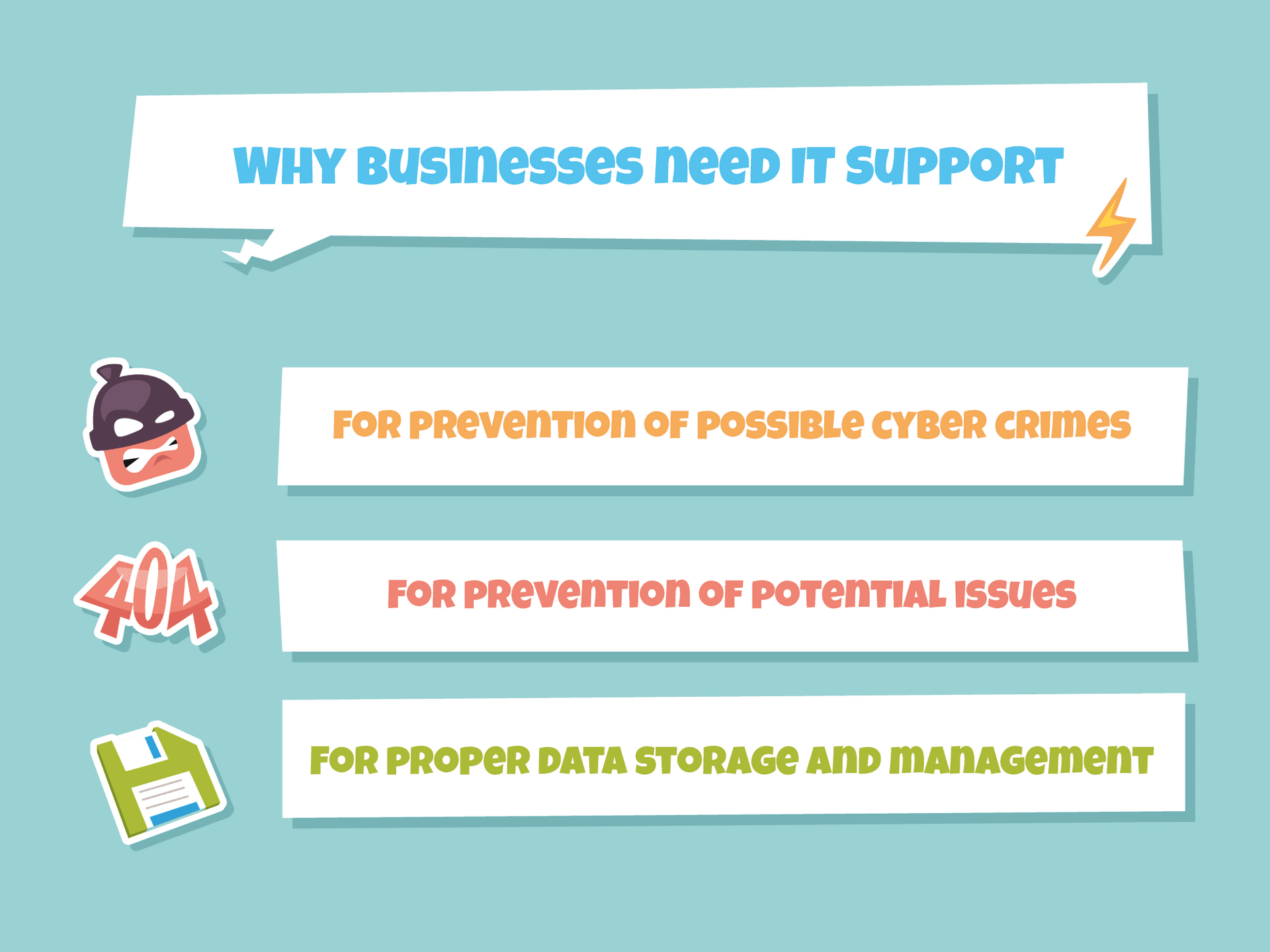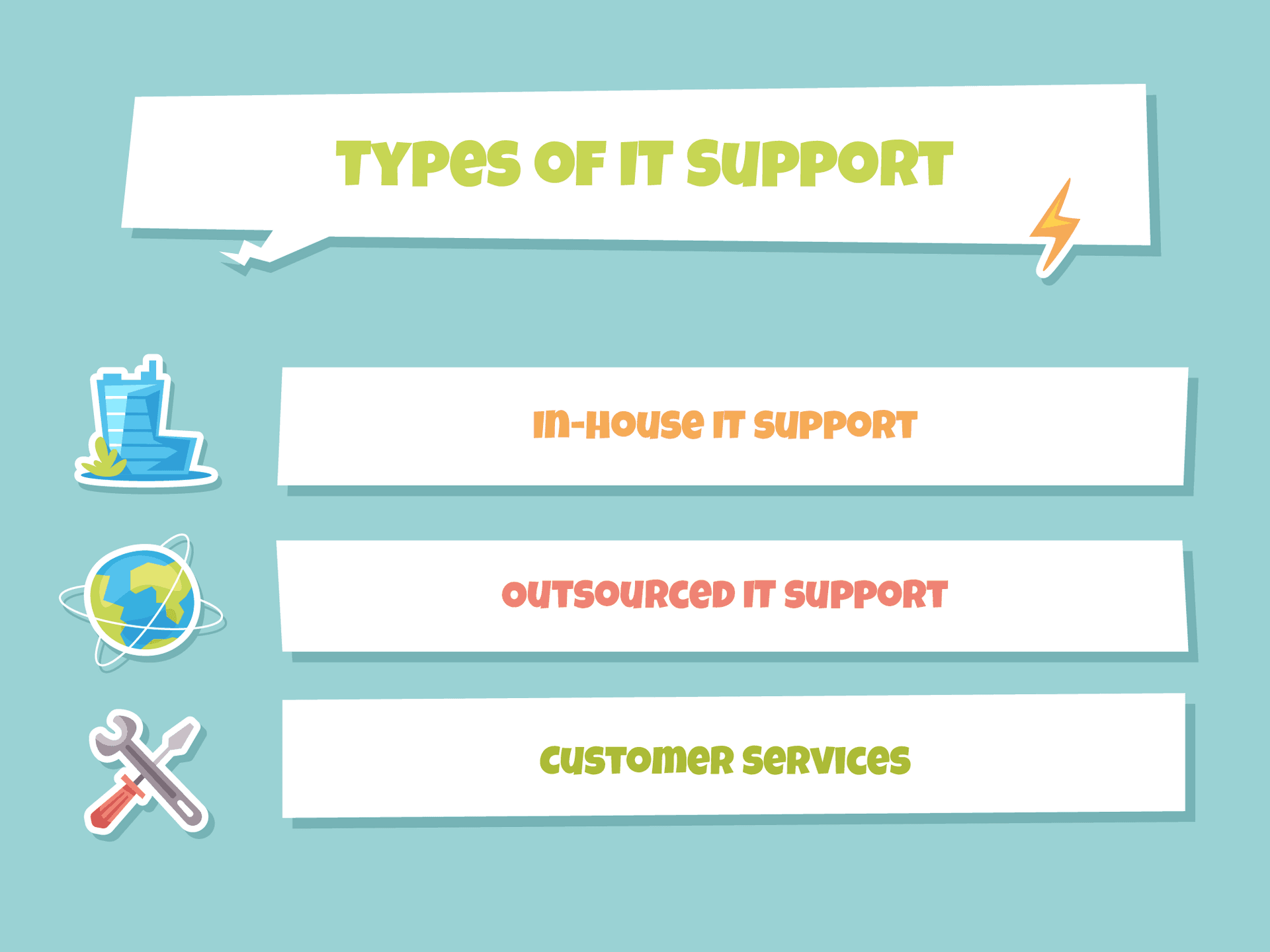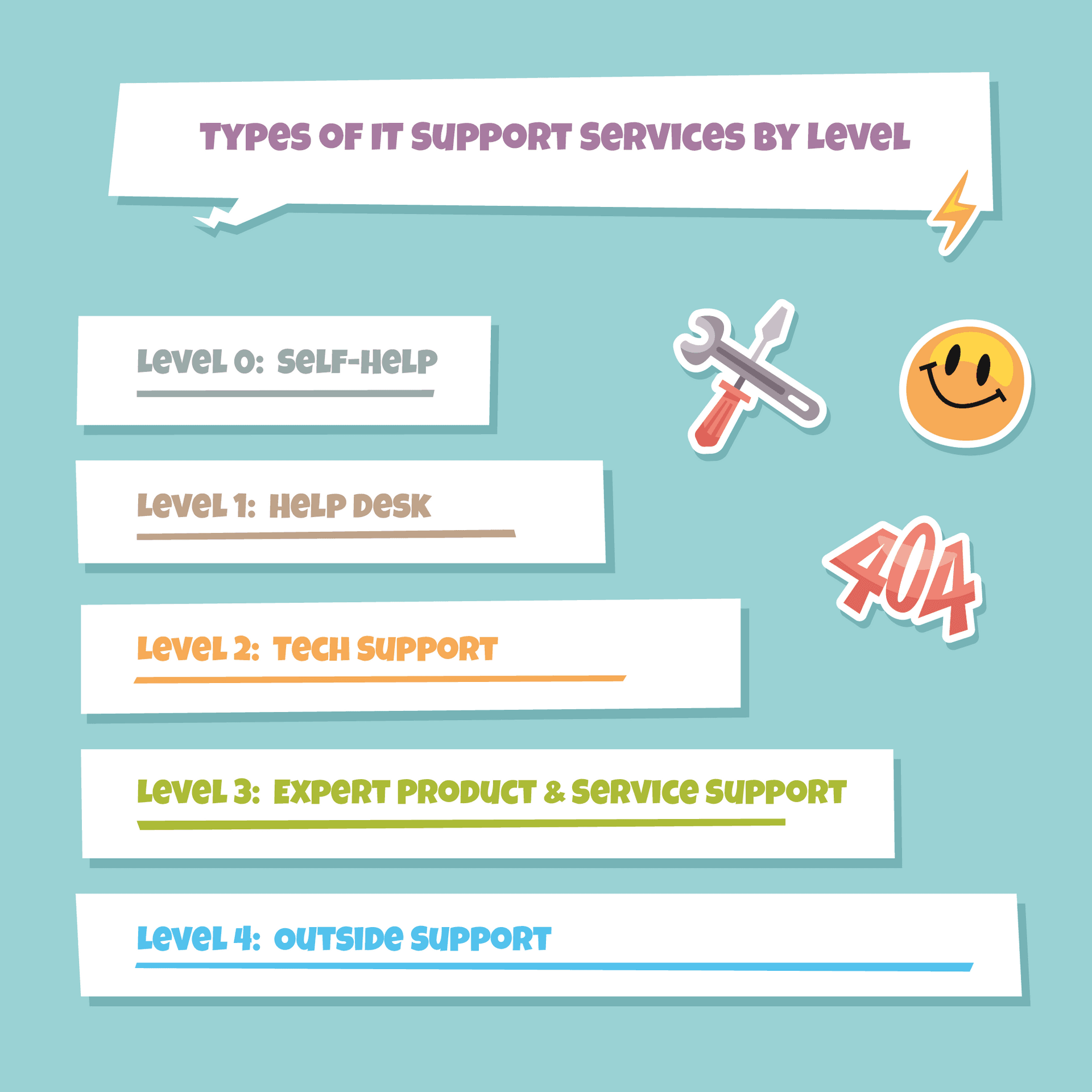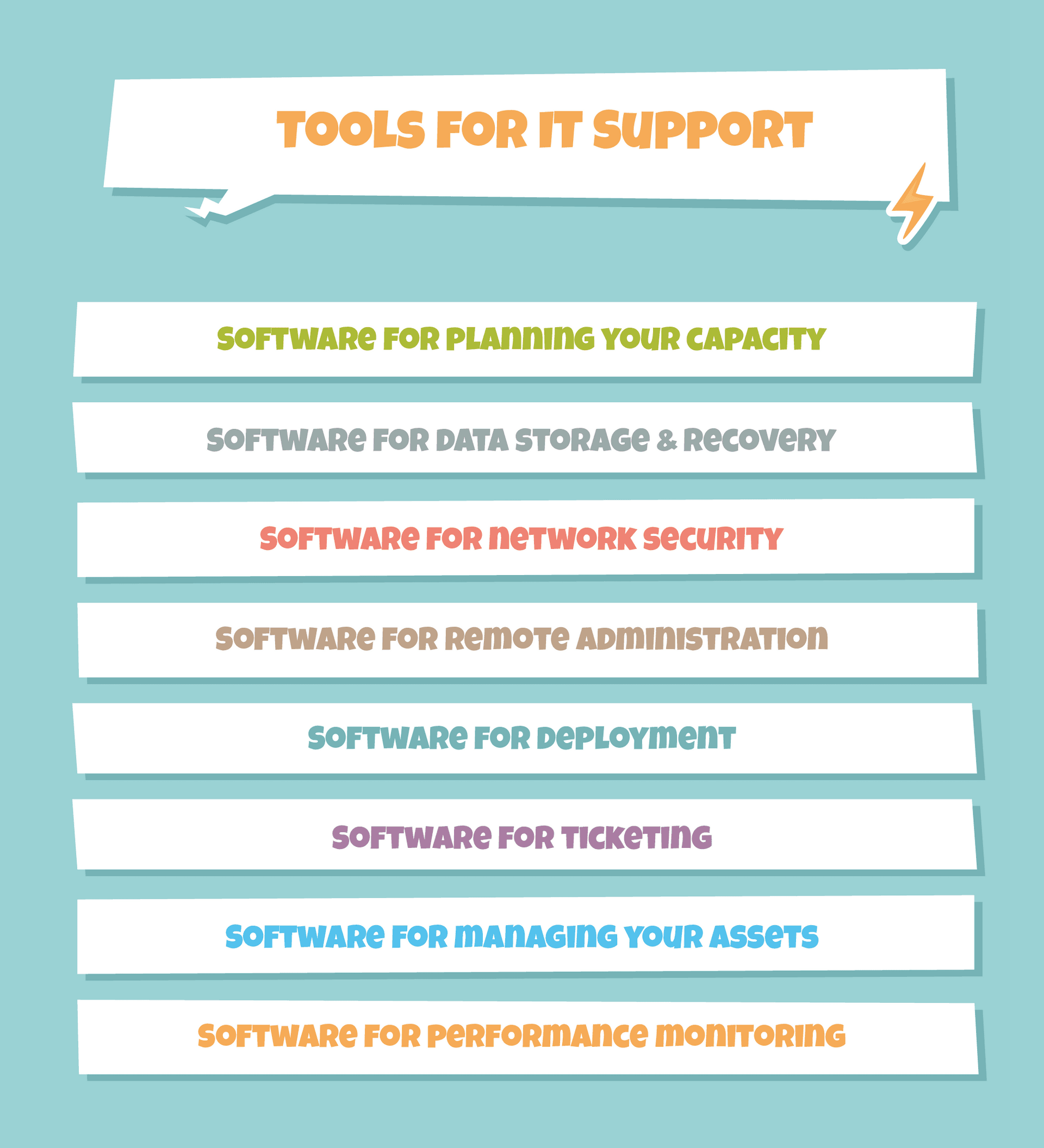In our digital era, companies need technologies on board, no matter their size or industry. That is why, oftentimes, they are one of the main business investments and thus they must be taken care of properly. That is when IT support comes into play.
The IT department ensures the smooth running of all the internal operations, prevention, and troubleshooting of any computer-related issues. The global spending on IT is expected to reach $5 trillion in 2024 and this number will continue to grow annually.
In this article, we will talk about what IT support is, why you need it, how it functions, and what it consists of. Read more to find all this out.
IT support is an essential component of modern business operations, and it is necessary to ensure that all IT systems are functioning correctly and efficiently. It plays a vital role in preventing system downtime, resolving technical issues, and ensuring that employees have the tools they need to perform their jobs. By investing in IT support, companies can ensure that their IT systems are functioning correctly, and employees have the tools they need to perform their jobs effectively.
There are different types of IT support, including remote support, on-site support, and managed IT services. Each type of support offers unique benefits, and companies must determine which type of support best suits their needs.
IT support teams have various functions, such as monitoring network activity, troubleshooting technical issues, and providing employee training. These functions help ensure that IT systems are operating smoothly and that employees have the knowledge and skills they need to use technology effectively.
IT support professionals use different tools such as remote access software, network monitoring tools, and helpdesk software. These tools enable IT support teams to provide timely and effective support, regardless of their location.
Definition of IT Support
IT support relates to supporting all the forms of information technologies for a particular business. This process consists of the management of software, hardware, and all the networks, plus handling all the data- and information-related processes.
To put it simply, IT support reps ensure that all the IT processes within an organization run smoothly by maintaining all the computer systems and networks, resolving technical issues, and managing software and hardware installs and configurations.
Why IT Support is Essential
Undoubtedly, the coronavirus pandemic has highlighted all the issues a company may have if they have badly functioning IT. Of course, there were some businesses for which the shift to remote work was painless because they had all the necessary technologies in place. But for many others, it became a real nightmare, and even some of them went out of business for this reason.
So, what value can proper computer support bring to your business?

-
Prevention of possible cyber crimes
You probably have heard about attacks on famous companies like Google or Facebook. But did you know that cybersecurity breaches are a reality for 31% of businesses today?
Yes, anti-malware software is great, but it can’t help you protect your business from every possible threat. On the contrary, a good IT support team will make sure your complete IT infrastructure is fully protected against digital threats and cyber crimes associated with them.
-
Prevention of potential issues
Even if you do know how your business systems work, it doesn’t mean you will know how to troubleshoot a problem when something goes wrong. Besides, having your system down even for a short period of time will negatively affect your business as well as your customers’ satisfaction metric.
Luckily, problems with a connection and many others can be easily solved with the help of an IT service team. Even via phone with the help of a technical support number. Furthermore, such a team can prevent many potential issues by implementing proactive monitoring of your system.
-
Proper data storage and management
The General Data Protection Regulation, or simply GDPR, came into force in 2018. And it is a set of regulations that defines how the personal data of EU citizens must be stored. If you do not comply with them, it is most likely that you will be severely fined.
How can IT support systems help you with it?
It is simple. It ensures that all sensitive data is stored secured and accessible only to those who are allowed to see it. If you don’t have an in-house IT services team, your data may be stored in a vulnerable location with access to people who don’t have permission for this. And this can affect your brand reputation negatively.
What Does IT Support Do?
As you already know, the IT support team is aimed at solving problems connected to internet technologies. If we speak about the most common types of such problems, we can break them down into the following categories:
1. Troubleshooting tech issues
Usually, companies have different hardware and software for their day-to-day operations. The IT support team’s goal is to ensure that all the servers and applications are up and maintained properly. So, they usually deal with computer overheating, computer repair, software errors and faults, slowing of computers’ speed, device and internet connection issues. They also deal with updating desktops, modems, and routers.
2. Viruses and malware programs
The tech team implements cybersecurity measures and solutions to prevent any possible cyberattack or data breach. They do so by performing monitoring and security of the network and educating the workforce on the new security protocols and policies.
3. Data backup
If you own a service desk, it may have information backup services that will protect you from any data breach, power outage, or system error or failure. Such systems can run a backup for your files, servers, or even desktops automatically or manually. These measures will protect you from data loss and ensure the safety of your data.
4. Access and passwords
Everyone has lots of passwords to remember and one of the key responsibilities of an IT support agent is to help an employee with password recovery when they can’t log into their system, email, or another app. They can also reset the passwords or reinstate the user rights, or, in case the problem is more complex, find a solution to it. Besides, when some third-party organizations need access to your system, IT support can provide temporary access till the work is completed.
5. Remote work
When you shift your business to remote or hybrid work and need to connect your workforce to your corporate resources safely, online technical support will help you out, too. They will ensure that all the communication means are secured and business infrastructure is kept in check.
Types of IT Support
Check out the most common types of IT support.

In-house IT support
The in-house support team is simply your tech team whose main responsibility is resolving tech issues connected to day-to-day business operations. This means they help employees resolve tech problems, are in charge of backups and security infrastructure, and remote work. Companies mostly hire an in-house tech team for support if they want to launch a product, maintain their internal systems, or need to protect sensitive data.
Outsourced IT support
Outsourcing your IT support means that you hire an external company to handle your IT support. Such a type of support can be divided into:
-
Full support: when you outsource all your IT support needs to an external provider
-
Proactive support: when the outsourcing company monitors both your hardware and software to prevent any possible issues with your system
-
Break-fix support: when the third-party online support company fixes any issue with your system or network remotely
Why do companies usually outsource their IT support? The main reasons are to cut their spending, to free up their internal team and let them focus on more important issues, or when they need round-the-clock support.
Customer Services
Customer services, aka professional services, is the support provided by a company that deals with the services or products you provide to your customers. This is mostly a combo of tech support and customer service. Such support ensures that your customers receive a positive experience. And they are oftentimes hired when a company provides certain services or products that require some tech maintenance.
What Skills and Qualifications Should an IT Support Have?
No matter whether you have an in-house IT support team, or outsource, there is a stable skillset that support agents must have. Overall, they must have expertise in the following basic IT-related tasks:
-
Being able to install various corporate devices, networks, hardware, and software
-
Troubleshoot all the breakdowns and issues
-
Conduct maintenance upgrades
-
Setting up accounts for employees
-
Being able to investigate, diagnose, and troubleshoot software and hardware problems
-
Being in charge of data security and protecting sensitive data
Types of IT Support Services by Level
Each IT support can be tailored to the requirements of the particular company. Here, we have created the most common types of computer services according to their levels and what exactly to expect from each of them.

Self-Help: Level 0
This level means that users self-help to find necessary support information and there is minimal assistance from the IT dep. This becomes possible with the help of numerous queries, FAQs, tech manuals, blog posts, articles from the knowledge page, chatbots, websites, and app pages.
Help Desk: Level 1
Help desks or Service Desks are often called the first line of technical support. Usually, users get in touch with them with the help of a computer support number or online to receive some basic tech support and resolve their issues.
Helpdesk Operators or IT Call Desk Support have general knowledge of many issues and can fast resolve some basic users’ issues with minimal downtime. For more effective work, they can use various support technologies to take remote control and phone support, plus support tools can help them consult users in real time without the need to hang on hold.
Tech Support: Level 2
This level requires more profound and specialized technical knowledge and expertise in the product or service. The personnel working on level two are called Customer Support Technicians or Desktop Support Analysts and they must have tech expertise and IT support certification to be able to find the right solution to the problem.
The process of fixing the problem on this level may consist of multiple consultations and conversations between different IT support technicians with customers and even taking the remote access control.
Expert Product & Service Support: Level 3
This level requires highly professional technicians for solving incidents, such as Network Specialists, Server Engineers, various programmers, engineers, and sometimes even chief architects. Their main aim is to find the root of the issue and then document the fix for future use of the specialists from levels one and two.
Outside Support: Level 4
Level four requires outside vendors and business partners to provide support for things that are not serviced by the company. Such items may include your printer support, machine support, or your vendor software support.
How Does Service Desk Support Typically Work?
If we speak about the IT support infrastructure, here we can define its two main types — tiered and swarming support.
-
Tiered support: includes all four levels of IT support. When the tech issue arises, it first goes to the zero level and then is escalated if there is a need for this and experts from the early level can’t solve it.
-
Swarming support: this type of support means one tech specialist works on the issues from the start till they are solved. This means that the problem won’t go to the next level and the tech specialist will seek the best way to solve it. It is called swarming because the tech expert usually swarms with his colleagues to find the solution and resources to fix the problem.
The Most Essential Tools for IT Support

To be able to efficiently run the whole IT infrastructure, tech support agents have various tech tools. These apps and software help them make their work much easier, faster, and more effective. Among the most common types are:
Software for performance monitoring
This type of software helps to better monitor the efficiency and performance of the whole IT infrastructure by observing servers and key metrics 24/7. All this helps boost IT performance and make the necessary changes if needed. Today, you can find numerous monitoring software on the market for detecting problems and troubleshooting them.
Software for network security
Security is a must for any business. That is why it is essential to employ military-grade network security software so that no one gets access to your corporate data. The common suite for network security of most organizations today includes:
-
VPN
-
Anti-virus and malware
-
Firewall
-
App and web security
-
Email security
-
Access control
Software for planning your capacity
Every successful company evolves and scales over time. That is why you need to plan beforehand the changes you will need to apply to your business processes. Of course, you can do this manually, but having reliable capacity planning software would be much more efficient. One of such tools deals with network management and allows you to scale and add more networks. If you have a growing business and IT infrastructure, this tool will come in handy, for sure.
Software for managing your assets
You need to always keep track of your current IT inventory. And an asset management tool can help you a lot with it, as this process is not about having a list of all your tech devices, it is also about their state, interaction, and costs.
Software for deployment
Deployment is often the most challenging stage of the whole development process. However, it can become much more stress-free with the right software deployment tools. With them, you can easily automate your IT processes, improve the current operations, and keep all your data safe.
Software for remote administration
In the times we live in now, remote administration tools are not a commodity anymore but a necessity for any company. Especially those that have remote employees all over the world and need online computer support. With the help of such tools, you can not only resolve issues remotely but even help other employees located on the same premises without the need to be near the device.
Software for ticketing
A helpdesk ticketing or ticket management system is a tool that will make the life of any technical support online agent easier by helping to solve tech issues received from customers faster and more efficiently. You can manage all the incoming tickets, give them priorities, and assign them to different agents just from one single system. The ticketing system is beneficial for complainants, too, as they see the status of their issue and get answers timely.
Software for data storage & recovery
Your company receives lots of data daily. That is why it is vital to have the right tool to transfer and store it. Besides, you need to have data recovery tools that will help you make backups of your data in case you accidentally delete it or it is corrupted by cybercriminals.
Wrapping Up
IT support is no longer the responsibility of tech companies only but an essential component of any business that doesn’t want to fail. IT-related problems can occur to your business at any moment, without previous warning. And you need to solve them fast and efficiently. This becomes possible with a reliable IT support team on board that can help you troubleshoot any IT issue and prevent any data breaches and cyber-attacks.